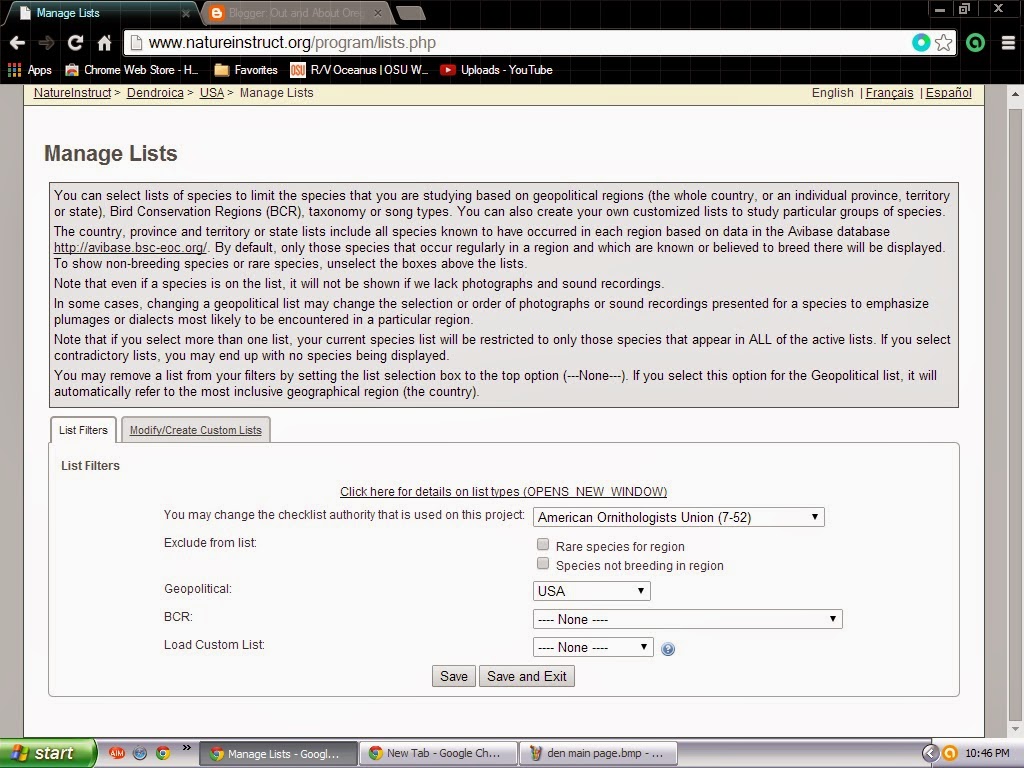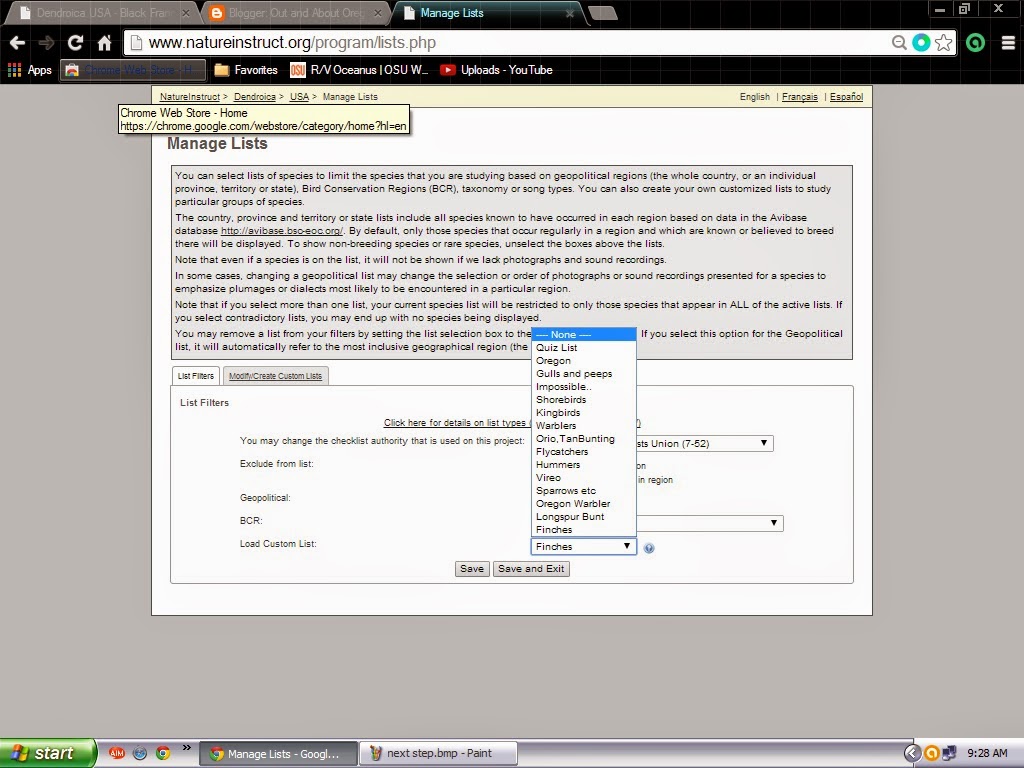Above is her bird book, Bird Life by Frank M. Chapman , signed "Bessie C Archer June '04". It is in rather poor shape. That is a Barred Owl staring out of the pages at me. I never knew my great-grandma. She was a strong independent person for her time. Her oldest son (Morse) was my grandfather, we called him "Duke".
I lived in California until I was 10, then we moved back to South Jersey to be closer to the grandparents. Once I lived nearer to him in Moorestown, we birded together. I was his sidekick, we put up bluebird houses all over South Jersey, we tried to stop the loss of marshlands behind Long Beach Island. We would bird all the hotspots around the area.
Other big birders in my family that I spent time with include Duke's sister Aunt Sunny Guthrie and her husband Uncle Henry Guthrie (top photo) . My Aunt Joy (dad's sister) would also bird with us when she came up from Williamsburg, VA.. All the other bird brains lived up in Vermont, I would see them from time to time but not as much as this gang.
This is the inside cover of my first bird book, a birthday present in 1964. This was my favorite page of the book. Not sure why I felt the need to scribble all over the Lark Sparrow and Mockingbird, but other than that the book is in great shape for belonging to a 4-year old. I also liked those cool tabs you put on your book to get quickly to the species you wanted. You can see them on the right side of book.
One of the lucky things I got to do as a kid was sail in Maine on my Aunt Sunny's sailboat, "Snowflake", this was my first real pelagic experience.
This seemingly harmless picture of two trees was taken out of Cutler, Maine in 1975. It was blowing hard that day and we decided to stay in the harbor. I was out walking with my binoculars and camera ( one of those cheap little boxes they used to have) when I thought I would try taking a picture of birds with the binoculars in front of the camera as an extra powerful lens. This is my first digiscoped or should I say cameranoculared picture. I took a bunch that day of the birds in the area. I remember being bummed when I got the pictures back that this was the only one they developed. I have scanned this photo carefully to see if I caught a gull or anything, but zippo. I cannot claim it as a "scoped" picture of a bird.
As a kid, one of my favorite spots to bird was Brigantine National Wildlife Refuge. Above is my list from Sept, 27, 1973. My favorite thing to do was to look for bittern in the marsh. I am sure I am the one who spotted bird 14.
Another favorite spot was Barnegat Light. This must have been about 1975 or so, we were on the jetty looking for birds when this tractor started backing back off the jetty from a construction site. I can still hear the beeping as it barreled down on us. we all managed to step to the side :).
I got an eastern version of Peterson when I moved to New Jersey, I do not know where that book is now. I suspect in a box at my sister's. She has looked for it and has said it is not there. The other bird books I had available at the grandparents where ancient texts on various subjects and areas. They are all still an interesting read.
The artwork is just beautiful. I did not appreciate these books then as much as I do now.
Surprising how much information on ducks was gathered by talking to the hunters. This is a page from the Cape May book.
I came out to Oregon to go to OSU, I birded some in the hills around Corvallis. During my last few summers at OSU I worked on the charter boats out of Newport. This was my first real pelagic experience on the Pacific. Here is an albatross at Perpetua Bank in 1982. I know, I know , 32 years later and my photos still stink.
After college I was a skipper on a private sailboat. It was hard to figure out what pelagic birds I was seeing, Peter Harrison's book was the first specific identification guide I ever bought. It was great but still it was tough. I remember often asking other's opinions and many species were ruled out because "they just do not occur this far north", how much we have learned in a very short time! I never cared too much about where I was when I saw birds. I always assumed Oregon stopped at three miles offshore. I was rather surprised when I learned the limit was 200 miles. The weather can make it fun as well, this is running downwind off Oregon in 50 knots in about 1987.
After my sailing experience I moved to Oregon to become a landlubber. My first rare bird report for Oregon was a Broad-winged Hawk out at the Roaring Springs Ranch..notice the committee felt the need to mention my "poor" photo :)
I do not know where the binoculars are that I used in New Jersey as a youngster. When I got to OSU I bought a cheap pair of Bushnell's. I used those up to when I got on the sailboat. Actually earning money allowed me to buy a pair of Leitz Trinovid 7x35s, just a great binocular. I used those up until a few years ago when I moved up to the Pentax 10x43s I use today.
After a period of non-birding to raise kids I have been back to serious birding for the past 14 years or so. It has been a huge part of my life and has been a great joy. My hikes on Mt Hood, trips to explore Malheur, wanderings of the coast have all been driven by my quest to find birds. I thank all those people who have helped me along the way!



















































